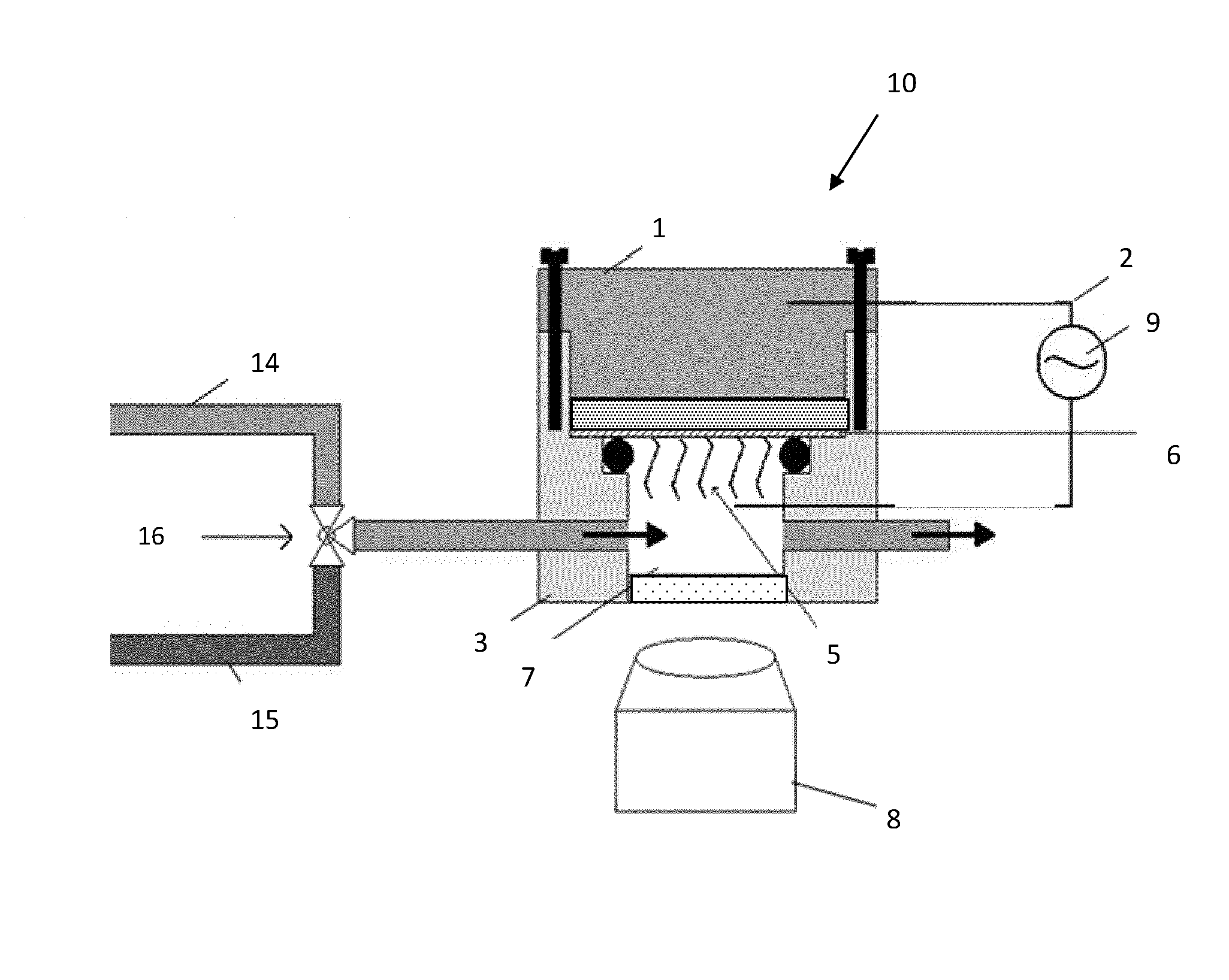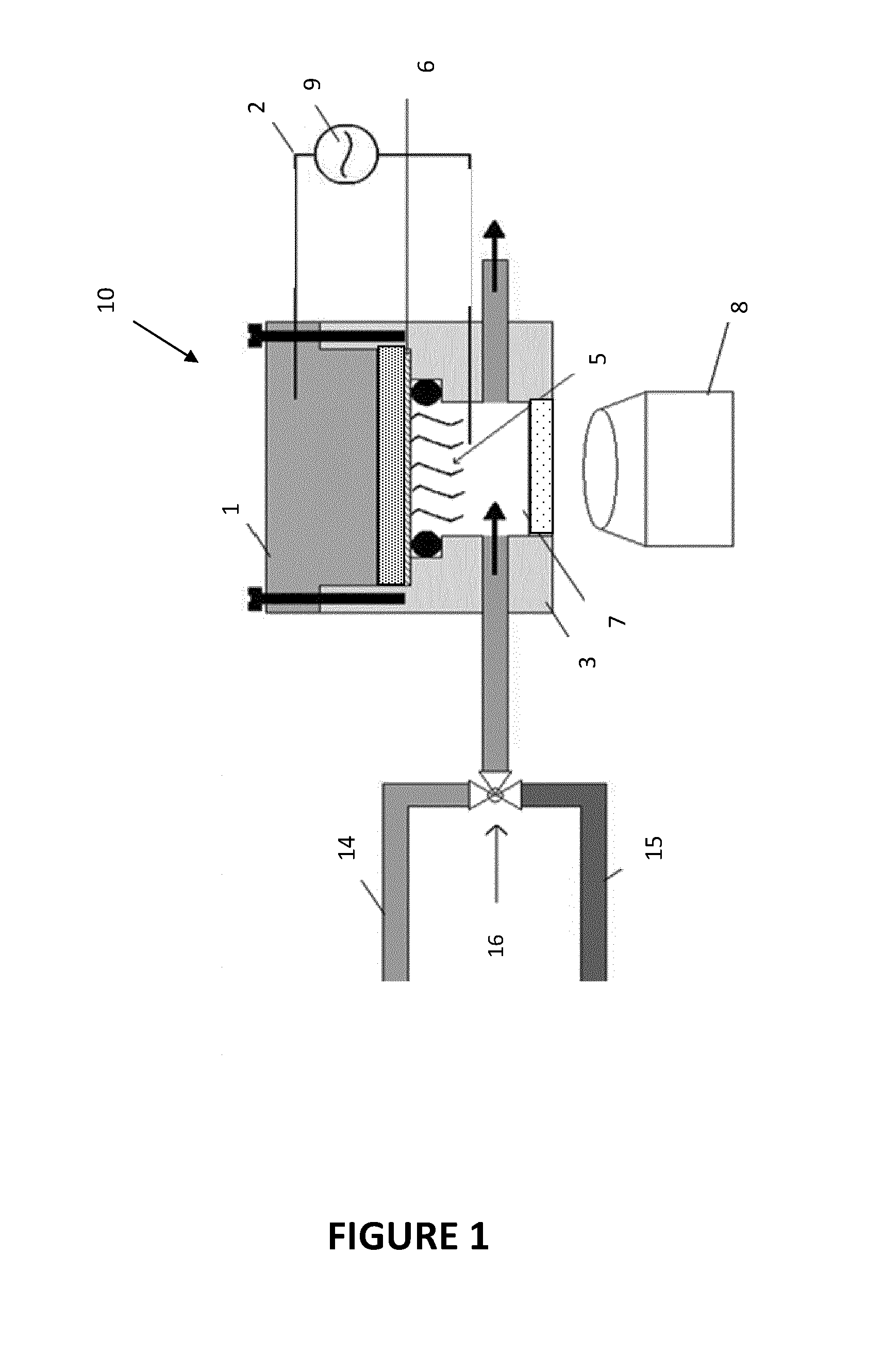Biosensor Using Impedimetric Real-Time Monitoring
a biosensor and impedimetric technology, applied in the field of detection and/or characterisation of particles, can solve the problems of complex optical readout techniques, lack of dynamic information on the dna binding kinetics, and need for fluorescent labelling of the target, so as to achieve reliable detection and/or characterisation, label-free and reliable, detection and/or characterization can be obtained
- Summary
- Abstract
- Description
- Claims
- Application Information
AI Technical Summary
Benefits of technology
Problems solved by technology
Method used
Image
Examples
example 1
Preparation of the Sensor Substrate (Electrodes) and Functionalization of Said Substrate with Probe DNA
[0077]Diamond-based sensor substrates (electrodes) such as nanocrystalline diamond (NCD) were selected because this material was known to be intrinsically biocompatible and to allow for the covalent immobilization of biochemical receptors by various techniques. Examples are the binding of proteins and DNA fragments [Yang et al., Angewandte Chemie—International Edition 47, p 5183 (2008)], where a manifold of denaturation-rehybridization cycles has been demonstrated without loss of binding capacity. An overview of functionalization strategies, both on oxygen- and on hydrogen terminated diamond surfaces, can be found in the review article by Wenmackers et al. [Wenmackers et al., Physica Status Solidi (a) 206, p 391 (2009)]. Furthermore, diamond offers a wide electro-chemical window and it is chemically and physically stable at elevated temperatures, under extreme pH conditions, and in...
example 2
Tethering of the Probe DNA to the Functionalized Sensor Substrate and Hybridization of Target DNA to the Probe DNA
[0078]First, 10-undecenoic fatty acid was photochemically attached to the H-terminated NCD electrodes by UV illumination (wavelength 254 nm, intensity 265 mW / cm2) during 20 hours under a protective N2 atmosphere. The reaction mechanism is presumably based on the fact that the hydrophobic C═C end of the fatty acid is oriented towards the H-terminated diamond surface and mediated by photoemission from the surface as proposed for the photochemical grafting of alkenes to silicon surfaces [Wang et al., Journal of the American Chemical Society 132, p 4048 (2010)]. After this photochemical treatment, the samples were thoroughly rinsed in acidic acid at 100° C. to remove unbound fatty-acid fragments. In a second step, NH2-modified ssDNA (36-mer with the sequence 5′-NH2—C6H12 AAA AAA ACC CCT GCA GCC CAT GTA TAC CCC CGA ACC-3′) was covalently linked to the COOH group of the fatty ...
example 3
Comparitive Impedimetric and Optical Denaturation Study
[0080]A real-time denaturation experiment on perfectly matched ds DNA (electrode # D1) is exemplarily shown in FIG. 2. After mounting of the functionalized electrode, the cell was filled with PBS buffer and installed on the confocal fluorescence microscope. The cell was allowed to stabilize for 45 min to guarantee that drift effects were absent and the noise level was below 0.5%. The moderate noise level in this measurement is related to the fact that the ambient temperature of about 25° C. could not be actively controlled. In all further measurements, not performed under the confocal microscope, the ambient temperature and temperature of all liquids were strictly stabilized to 19.3° C., resulting in even lower noise levels. At t0=0 min, 0.1 M NaOH at a flow rate of 250 μl per minute enters the cell and replaces the PBS filling. This results in an impedance drop, which consists of two separate contributions: i) the intrinsic eff...
PUM
| Property | Measurement | Unit |
|---|---|---|
| thickness | aaaaa | aaaaa |
| thickness | aaaaa | aaaaa |
| thickness | aaaaa | aaaaa |
Abstract
Description
Claims
Application Information
 Login to View More
Login to View More - R&D
- Intellectual Property
- Life Sciences
- Materials
- Tech Scout
- Unparalleled Data Quality
- Higher Quality Content
- 60% Fewer Hallucinations
Browse by: Latest US Patents, China's latest patents, Technical Efficacy Thesaurus, Application Domain, Technology Topic, Popular Technical Reports.
© 2025 PatSnap. All rights reserved.Legal|Privacy policy|Modern Slavery Act Transparency Statement|Sitemap|About US| Contact US: help@patsnap.com



